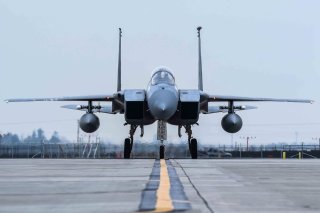Watchdog Finds Major Issues With U.S. Navy, Air Force Aircraft Readiness
The office concludes that serious Congressional action is needed to get aircraft mission readiness rates up.
The United States Government Accountability Office (GAO), the federal body that investigates, audits, and evaluates federal programs for the United States Congress, concluded that the U.S. Air Force and U.S. Navy’s mission readiness rates for their aircraft fleets have worsened since 2015.
“The Air Force and Navy spend billions of dollars annually to ensure the availability of their aircraft and use a variety of metrics, such as mission capable rates, to assess the health and readiness of their aircraft fleet,” the GAO report explains. “For the selected aircraft in our review, mission capable rates and other maintenance metrics have worsened since fiscal year 2015. These downward trends in aircraft readiness are not new nor are they specific to our case studies.”
The reasons for poor readiness rates are varied, but over the past ten years or so, the GAO has “issued numerous reports finding persistent aircraft availability challenges.” It has concluded that “maintainer staffing shortages, supply and parts availability, technical support and access to proprietary data, access to support equipment and facilities, and an increase in the frequency and duration of scheduled maintenance and inspections, among other things, have affected Air Force and Navy units’ ability to have aircraft available for operations and training.”
The GAO examined readiness rates for the F-22 Raptor stealth fighter, the B-1B Lancer bomber, the KC-135 Stratotanker, F/A-18E/F Hornet, P-8A Poseidon, and several other significant air platforms. None of those platforms met their target readiness rates in the 2015 to 2021 timeframe.
The GAO did find that both the Navy and Air Force have taken some steps “to address unit-level maintenance challenges through aviation sustainment strategies and fleet-wide initiatives,” but that these measures were not effective in significantly raising Navy and Air Force aircraft readiness rates.
The report also found that neither the Navy nor the Air Force has completed required sustainment reviews. These reviews require “the military departments to conduct sustainment reviews for major weapon systems to assess their product support strategy, performance, and operation and support costs.”
Here is the GAO’s recommendation:
Congress should consider amending section 4323 of Title 10, U.S. Code to require the Air Force and Navy to submit to Congress mitigation plans related to identified maintenance challenges and risks to aircraft availability found in sustainment reviews based on a specific sustainment threshold. Such thresholds could include aircraft falling below their mission capable rate goal for consecutive years; an aircraft’s mission capable rate declining by a specified percentage; or some other sustainment metric or metrics.
Caleb Larson is a multimedia journalist and defense writer with the National Interest. A graduate of UCLA, he also holds a Master of Public Policy and lives in Berlin. He covers the intersection of conflict, security, and technology, focusing on American foreign policy, European security, and German society for both print and radio. Follow him on Twitter @calebmlarson
Image: Flickr

